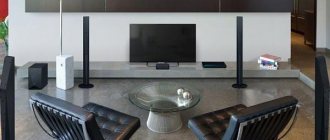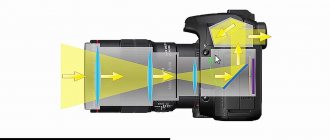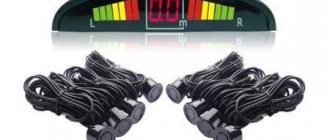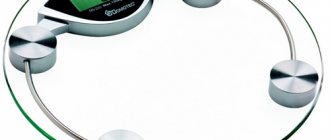Today televisions have become an integral part of every family. Coming home after work, everyone wants to clean themselves up, be sated and disconnect from reality for a while with the help of a spectacular performance. For decades, television has been successfully coping with this human need, presenting households with various entertainment programs and watching their favorite films. Television has become an everyday object for all people without exception.
In addition, this technique serves as the main mass media, allowing vacationers to find out news about events occurring within the state and beyond. Plus, TV viewers are offered a lot of useful sections that allow them to obtain educational information about various ways to spend their holidays and receive useful tips about the home and garden. Television attracts millions of people to its screen every day. And if we add here a club of interests that attracts fans of sports competitions and all kinds of championships in other areas of entertainment, then it becomes clear that television is ready to fill all the free time of any person. The structure of the TV, its history, operating principle are further in the article.
Revolutionary discovery
The first discovery was made back in 1843 by naturalist A. Behn, who built a device using wax-metal plates. His invention was capable of transmitting images over a distance. However, the main discovery belongs to W. Smith, who in the second half of 1873 established that semiconductor elements have the ability to change resistance when the brightness of lighting changes.
Differences between modern TVs by type
Today, TV is a must-have device that can be found in every home. All over the world you can find enough people who are so attached to television programs that they simply cannot imagine their life without television. Modern TV devices are divided into the following types:
- kinescope;
- plasma;
- projection;
- liquid crystal.
Nowadays, every person has the opportunity, sitting at home on the sofa, turning on one of these devices, to observe the events taking place in any part of the planet.
CRT
A television kinescope looks like a glass bulb, with an electron tube on one side and a screen on the other. The kinescope screen is provided with a special phosphorus-containing coating. The electron tube shoots a stream of electrons through it. When the electron reaches the phosphor panel, the involved pixel begins to glow. In the first black-and-white picture tubes they installed one tube, then in color receivers they installed three at once, separated by color. One of them was red, the other was blue, and the third was green.
The electron beam, moving from left to right, outlines a line of pixels and then moves downward, creating a vertical line. This happens continuously at high speed, and in the meantime the eye sees the whole picture. Oscillation frequency is measured in special units called hertz. The first picture tubes always had a convex surface; later they began to produce more convenient models with a completely flat screen. Thus, the design of the TV screen has always been considered a complex and important element. And models with a flat screen were more expensive.
General information about liquid crystal matrices
The types of TV matrices of the latest generations have one thing in common - they all work on liquid crystals, which were discovered at the end of the 19th century, but only recently began to be used in screens and monitors. Crystals have become widespread due to their property: while in a liquid state, they retain a crystalline structure. This phenomenon allows you to obtain interesting optical results by passing light through this substance, due to its dual state, color modeling is fast and rich.
Over time, they learned to divide a matrix cell with crystals into three segments: blue, red and green. This forms a modern pixel - a point, the combination of which with other points gives a picture. The structure of any television screens in the 21st century consists of such pixels. But the design of the pixel itself (the number of electrodes, transistors, capacitors, angles of electrodes, etc.) determines the type of matrix. There are clear characteristics that distinguish the functioning of some pixels from others.
Which type of matrix is best for a TV becomes clear after studying their varieties and features.
The most common types are the following:
- TN;
- VA;
- IPS.
Thanks to certain technologies, one matrix is better for a TV than another. They also differ in cost. But under other circumstances, this difference may not be felt, so it’s worth saving. So, what are their main differences, advantages and disadvantages?
Plasma
What is the operating principle and design of this type of TV? The principle of operation of a plasma panel is the effect of ultraviolet radiation on charged particles called phosphors. When an electric discharge moves through a field of discharged gas, ultraviolet light appears and a conducting corridor opens, which consists of plasma.
With the help of conductors, some of which are located vertically and others horizontally, frame and line scans are produced from the inside of the panel. The television processor is capable of adjusting the distribution of frames at unprecedented speeds. Thanks to this property, the eyes see a solid image from the outside of the screen.
Flat-panel TVs are replacing CRT TVs
The entire variety of presented models is determined by two most important parameters: type of design and screen size. Today, traditional CRT TVs are disappearing from the scene, and two types of flat-panel TVs are conquering the market: liquid crystal (LCD) - LCD (Liquid Crystal Display) and plasma - PDP (Plasma Display Panel). It is these modern technologies that are the main competitors today, and it is their confrontation that often makes buyers scratch their heads when choosing a replacement for the outdated “old man” CRT.
Unlike picture tubes, flat-panel TVs (sometimes called plane-parallel panels) do not have geometric image distortions and do not use high voltage (yes, those same kilovolts, without which no picture tube can work). Such TVs do not create harmful electric and magnetic fields, since they do not contain the same scanning units and high voltage voltages that are used in traditional TVs. They themselves are not affected by external fields, which allows them to be successfully used as information display devices in home theaters together with speaker systems containing dynamic heads with unshielded magnets.
Flat-panel TVs have a very thin body thickness, which allows them to use living space more economically and fit into almost any interior. And, what is very important, only modern flat-screen TVs fully support the latest digital technologies, including the provision of high-definition television.
The main difference between new technologies for image formation on flat screens and CRT screens is the control of the entire array of image elements simultaneously. Let us remind the reader that the process of reproducing an image on a kinescope screen comes down to the sequential drawing of individual lines by electron beams, the whole picture of which is formed only due to the inertia of its perception by human vision.
Both technologies use a common basic principle for obtaining a variety of colors - dividing the screen into tiny dots (pixels), each of which is formed by three even smaller dots (subpixels) or cells of three primary colors: red, green, blue (triads). If the viewer is at some distance from the screen, then he cannot distinguish subpixels from each other and perceives them as a single whole. Therefore, using these three colors in different proportions, you can create a variety of colors, and in equal proportions, but with different intensities, you can create all shades of gray from white to black.
Let us first consider how these two modern technologies differ from each other.
Projection
The operating principle of projection televisions is based on an algorithm for transmitting high-quality images from a minimized transmitter to a large screen. The transmitted image is formed inside the projection TV itself, using a small source made up of electrical tubes or a liquid crystal display. Then, using mirrors and optical devices, it is projected onto a prepared screen.
What is the device of the TV? The entire structure consists of a sound system, a projector, a control panel and a screen. In models intended for home use, all components are contained in a common housing. For this reason, they turn out to be oversized. The projection method of image transmission allows you to combine the softness and richness of the resulting image, as well as wide possibilities for color resolution. In addition, the image transmitted by projection televisions is completely free of grain, which is a disadvantage of picture tubes.
LCD TVs
LCD TVs are the most popular type of such devices, judging by the number of purchases of the latter per year. Their screen sizes range from 12 to 65 inches, portable models - from 5 to 10. The weight of the heaviest is less than 5 kg. Very thin – 3-5 cm. Long service life – 15-20 years.
Energy consumption is less than 25 to 40 W/h, which is 2-3 times less than CRT. LCD TV screens are coated with an anti-glare layer to prevent glare during use.
Viewing angle is an important characteristic only for LCD TVs. This criterion determines the maximum angle at which the image on the screen is transmitted without loss of quality (maintains brightness and contrast).
In the balance between price and quality, LCD TVs are the best option.
Advantages of LCD TVs
- Energy saving;
- Space saving due to the thinness of the case - can be hung with a bracket on the wall or ceiling;
- Anti-glare display;
- Low heating – up to 30 degrees Celsius;
- Long service life.
Disadvantages of LCD TVs
- Long response time;
- The viewing angle is smaller than that of plasma and CRT.
The principle of operation of LCD TVs The operation of an LCD device is based on a viscous liquid (cyanophenyl), consisting of strictly ordered molecules. Under the influence of an electric field, they simultaneously change their position. When a light stream passes through them, they polarize it. For this last property, cyanophenyl is called liquid crystals, due to the similar properties of solid crystals.
The luminous flux is created by a light source (the principle of operation of the LCD panel depends on where it is located: transmission or reflection). Cold cathode fluorescent lamps are used as such a source. The light passes through the first polarizing filter, then through a layer of liquid crystals with control electrodes.
A potential difference (voltage) is created at the electrodes, the magnitude of which affects the degree of rotation of the polaroid crystals, and, as a consequence, the angle of polarization of the light. The larger the latter, the brighter the pixel on the screen glows. The light then passes through a second polarizing filter positioned perpendicular to the first and finally, after passing through a color filter, is output to the screen.
The response time is the speed at which the crystals rotate when voltage is applied to them.
The higher the applied voltage, the faster the crystals turn - the shorter the response time. The faster the response time, the less blurry the video (change of images) appears on the screen. To maximize response speed, response time compensation (RTC) technology is used. Its principle is to provide the pixel with voltage with maximum amplitude.
The image on the LCD TV screen remains on the display until it is replaced by another (frame change), because the pixels of the screen never go out, but only change the intensity of the glow.
Liquid crystal
The design of LCD TVs is created on the principle of polarization of a given light flux passing through the crystals. The LCD panel is presented in the form of two layers consisting of special polarized glass, which are connected together. The first layer is coated with the desired polymer, which contains special liquid crystals. Then a current of electricity passes through them, causing all the crystals to rotate along a certain path. Meanwhile, the moving crystals transmit the required amount of light through the next layer of glass.
For light to pass through liquid crystals, an external source is needed. It is placed outside the polarized glass. Liquid crystals transmit lamp light through themselves, and since they are in a certain position, an image appears using a filter.
LED TVs are designed differently. LEDs are used to illuminate the liquid crystal matrix. They consume much less energy and also produce greater brightness. These devices have better color reproduction and sharper contrast. They also have an increased service life and operation is accompanied by less heat generation. By mistake, some people consider this system to be a digital TV device, however, digital TV is only a method of signal transmission.
LED TVs
Roughly speaking, LED TVs are no different from LCD TVs. They simply use more sophisticated, durable, stable light sources - these are semiconductor crystals. They solved all the problems of gas-discharge lamps in LCD TVs, namely:
- do not have high energy consumption;
- show a service life much longer than gas-discharge lamps;
- are characterized by small dimensions;
- work in a wide temperature range;
- form a more intense color flow;
- are distinguished by a pure, uniform white spectrum, allowing for more color tones to be conveyed on the display.
Like LCD, LED TVs use a liquid crystal matrix and backlight. However, the intensity of its radiation, which has increased many times over, has made it possible to simplify and reduce the cost of the overall design as much as possible. This is how Edge LED backlighting appeared. In it, diodes are placed only around the perimeter of the display. Their light is directed along the screen. Refracting at the light filter and reflecting from the back substrate with a mirror surface, it forms a general, uniform light flux over the entire area of the matrix.
LG TVs
The South Korean company LG is considered one of the world's leading manufacturers of electronics for home use. Products of this brand have always been in great demand among consumers in all world markets. Such results were achieved thanks to the exceptional quality of branded samples and the use of the latest technical developments. This is well confirmed by the latest models of LG LED TVs. They have improved image quality, however, they have a lower cost than their competitors' analogues.
The design of LG TVs unites a number of generations. This includes the main models that were created on the basis of LED technology, and an even newer development from the company called OLED-TV. The next model is distinguished by the use of the latest matrix, which uses organic LEDs. This approach to production took image quality to a new level.
Tips for choosing a TV
It would seem that if all TV manufacturers used the same imaging system, all models would offer their customers the perfect picture. In practice this is not the case. On some TVs, only calm video content looks good, for example, programs about nature or news. Dynamic images, such as sword fights or modern special effects, look downright dull and lacking in contrast.
This is explained quite simply. Liquid crystal colloids of different quality have different sensitivity to the electric field. Roughly speaking, they are positioned more slowly when pulsed by the imaging system. As a result, the matrix simply cannot keep up with the video sequence. When displaying dynamic scenes, a situation arises when an elementary color point does not yet produce the required level of transparency, and the TV is already sending a command to reorient the crystals. As a result, the image is blurred and a halo appears around moving objects. This feature of the operation of LCD matrices must be taken into account when purchasing a TV. Some manufacturers explicitly indicate the reaction rate of the crystals.
Important! The peculiarity of human vision is such that the eye-brain system has a minimum time for image and color recognition of 2-4 ms, depending on the characteristics of the organism. If your TV has a response time close to this value, dynamic scenes and complex color transitions will look great on it.
Modern normally transparent LCD matrices have a response speed of 5 ms. These are cheap TN-Film displays and solutions of a similar group. The best IPS matrices show about 4 ms. Premium screens have a response speed of 1-2 ms. But what to do if the manufacturer has not indicated such detailed data in the TV’s specifications, but you want to buy a device to enjoy a perfectly clear picture? In this case, you need to focus on another key TV parameter - the progressive scan frequency. This image rendering mode means that the image is transmitted sequentially, and the pixels are activated without skipping rows. A value of 50 Hz will indicate that the matrix refresh rate is 20 Hz.
This seems to be an unacceptable amount for the human eye. However, it is worth considering the mechanics of the LCD pixel. It needs time to orient itself, only after that a shade with the required characteristics is formed. Thus, the screen refresh interval must be divided by 3 (rounded value). At a frequency of 50 Hz, we get a basic matrix response speed of 6.5 ms. It's already very close. And if you consider that today the market offers TVs with progressive scanning at 60, 80, 100 and even 200 Hz from the best Samsung solutions, buying the ideal model that fully satisfies all your needs will not be difficult.
Samsung TVs
The word “Samsung” is translated from Korean as “three stars”. The company is South Korean. This name is well known all over the world. is considered one of the main suppliers of electronics, as well as household appliances. The company has many years of experience in producing television products and is one of LG's main competitors.
However, Samsung TVs, the device of which has individual characteristics, are still in great demand.
Causes of malfunctions
Often the cause of breakdowns is improper handling of equipment by the owners themselves. Regular compliance with basic operating rules will allow you to keep your expensive device in working condition for a long time. Repairing a TV can sometimes be expensive.
First of all, you should not keep the device in a room where high humidity is possible. It is also necessary to protect the device from mechanical damage. The optimal TV operating time is 6 hours, after which it is better to take a short break. If you connect other devices to the television receiver, you should check their compatibility.
In the event of systematic failures in the operation of electrical networks, it is necessary to install a voltage stabilizer that insures the devices against current surges when suddenly turned on. Handle the remote control with care. In most cases, it is a rather fragile structure. In case of serious damage, a device such as a TV remote control is not always easy to pick up.










